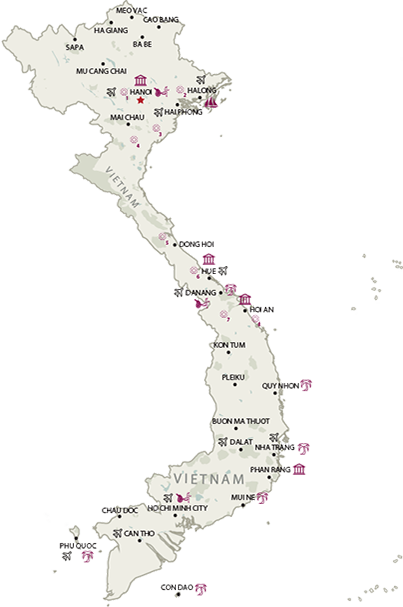Long An Overview
Located on the Mekong Delta, Long An is surrounded by Tay Ninh Province and Cambodia on the north, Ho Chi Minh City on east, Tien Giang Province on the south and Dong Thap Province on the west.
Topography
Long An is divided into smaller areas by a complex network of rives and canals. Silt from Vam Co Dong and Vam Co Tay rives has raised the level of the field of Long An. This silt makes a good condition for agriculture. The terrain is quite flat except some hills and mounds on the north. The western area belongs to the Plain of Reeds.
Climate
Long An is on tropical monsoon climate. The rain season lasts from May to October and the dry season lasts from November to April next year. Annual average temperature is 27.4oC.
Tourism
Coming to Long An, visitors are attracted to Long An by value of Oc-Eo culture that develops on the Mekong Delta from 1st BC to 6th century BC. 12,000 objects of 20 prehistoric monuments and 100 Oc-Eo culture relics have been found there. Beside these, Long An preserves valuable sites including House with Hundred Columns, Rach Coc Fort, Ton Thanh Pagoda. House with Hundred Columns was built in Long Huu Commune in 1901. The architecture and sculpture of the house were realized by 15 clever and skillful workers. The house consists of 68 round wooden columns, 12 square wooden columns and 40 brick columns. The ornaments on the ends of the columns are representations of lush vegetation, including trees, flowers and birds. Rach Coc Fort was built in Long huu Commune in 1903 and is one of the greatest forts in Vietnam. It is 300m long and 100m wide. It has five floors, three of which are underground. Ton Thanh Pagoda is located in the Thanh Ba hamlet of My Loc Commune. Built in 1808 by northern emigrants, Ton Thanh Pagoda is the oldest pagoda in Long An Several valuable ancient statues with its design in 19th century still are remained in the pagoda. Vietnamese poet Nguyen Dinh Chieu lived in the pagoda from 1859 to 1861. Sailing upstream the Vam Co Tay River, travelers will reach the center of the Thap Muoi Field, the typical eco-tourism site of the lowland in the South. Tourists can see cajuput forests whose aroma attracts herds of bees, and immense ponds of lotuses showing their beauty in sunlight. There are many rare animals such as herons, red cranes, turtles, snakes, and many more. In drought years, people living in the agricultural production areas of Long An usually organize rain-seeking ceremonies to worship Heaven and Earth in the hopes that they will be granted rain.
Transportation
Long An has National Highways No.1A crossing Tan An City, National Highway No.62 linking to Binh Hiep Border Gate to Cambodia, National Highway No.50 from My Tho (Tien Giang) to Ho Chi Minh City via Can Duoc. Long An is 47km from Ho Chi Minh City.








.png)